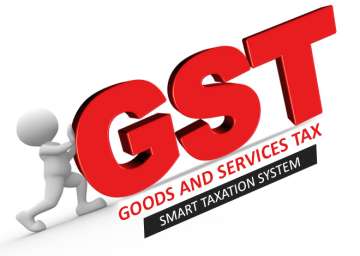Goods and Services Tax: The unsung heroes who made GST a reality
Since the passage of the Constitution Amendment bill in August 2016, there were over 175 officers' meetings and 18 sittings of the GST Council -- leading to 18,000-plus man hours of discussions for a smooth roll out of the new tax regime.

At a gala event to launch the Goods and Services Tax (GST) at the historic Central Hall of Parliament, Prime Minister Narendra Modi said the indirect tax reform is a result of combined efforts of various political parties at different points of time. There were a slew of politicians present during the 60-minute star-studded midnight gala that was a witness to a historical moment. But away from the media glare and relentless public commentary, there were men and women who worked tirelessly to bring to fruition the country's biggest taxation overhaul since Independence.
The rollout of the GST was in the making for over a decade, which was effected through an amendment to the Constitution and five supporting laws being passed by Parliament and state assemblies. Since the passage of the Constitution Amendment bill in August 2016, there were over 175 officers' meetings and 18 sittings of the GST Council -- leading to 18,000-plus man hours of discussions for a smooth roll out of the new tax regime.
A battery of Central and state government officials burnt the midnight oil to meet the July 1 target for launching the GST.
Official sources said as many as 30 sub-groups and committees worked tirelessly to devise rules and laws as well as fix tax rates for over 1,200 goods and services.
While the final decisions were taken by the GST Council comprising Finance Minister Arun Jaitley and his state counterparts, who met on an average twice a month in the last nine months, officials in the fitment and rate committees met thrice or four times a week to sort out differences between the Centre and states and present an acceptable proposal to the Council.
Most of the state tax officers would camp at the national capital for the entire week during the meetings, before returning to their states over the weekend to look into issues there. The widespread deliberations of Central and state officials laid the groundwork for the new law's implementation.
Here are some of the officials who worked tirelessly to bring the GST to reality:
While Revenue Secretary Hasmukh Adhia and CBEC chairperson Vanaja Sarna were at the forefront, Commissioner GST Upendra Gupta, Consultant in the Department of Revenue P K Mohanty, Joint Secretary (TRU) Alok Shukla, Chief Commissioner CBEC P K Jain, Commissioner CBEC Manish Sinha and many other Central officers ironed out numerous issues behind the scenes.
Among state officials, sources said innovative ideas came in from Commissioner Commercial Tax (CCT) Karnataka Ritvik Pandey, CCT Gujarat P D Vaghela, CCT Maharashtra Rajiv Jalota, Additional Secretary CT Bihar Arun Mishra, and Anwar Khalid Additional Commissioner, West Bengal.
All the state officers worked overtime to make the GST rates and rules as user-friendly as possible.
Joint Secretary Revenue Udai Kumawat was the man behind drafting of the GST Constitutional Amendment law as well the compensation to states law.
P K Dash (Director General-Training) manned the training academy preparing officers for the high-voltage reform which subsumes over 17 different taxes and transforms India into a unified tax market.
Nearly 55,000 state and Central officers have been trained in the academy and in-house training programmes were organised at the Commissionerate level. E-training modules were also released.
GST will reduce the cascading effect of taxes, decrease prices, create a common market that will not fuel inflation and make it easier to do business.
The self-regulating tax system and non-intrusive electronic architecture would decrease black transactions, officials said.
(With PTI inputs)